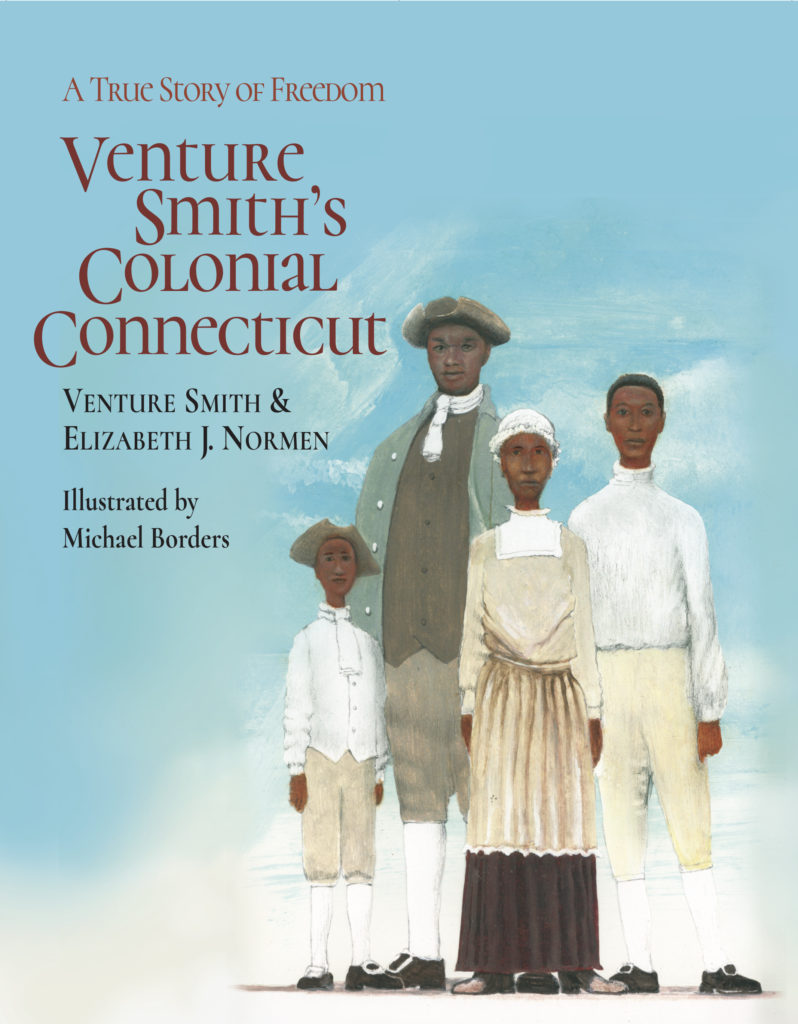(c) Connecticut Explored Inc. Fall 2019
Subscribe/Buy the Issue!
“Family” is the theme of this issue, and one Connecticut family in particular has been very much on my mind this last year. Venture and Meg Smith and their family lived in Haddam during the late-colonial and American Revolutionary era. Smith’s autobiography, A Narrative of the Life and Adventures of Venture, A Native of Africa but resident above sixty years in the United States of America, was published in New London in 1798, seven years before he died. In it he tells of his capture and enslavement as a boy in West Africa and his life in southern New England. After 30 years of enslavement, in 1769, at around age 40, Venture bought his freedom from his Stonington owner. He then purchased his family and went on to own more than 100 acres of land in Haddam Neck.
Descendants and members of the public gather every September at the First Church of Christ Cemetery, 489 Town Street, East Haddam, where the Smiths are buried to commemorate and celebrate Venture Smith. Venture Smith Day will be held on September 7, 2019, 1 – 4 p.m., and all are welcome.
This fall CT Explored is debuting Venture Smith’s Colonial Connecticut, a new book that will enable fifth to seventh graders to learn about colonial Connecticut through Smith’s Narrativeand about the state’s story of slavery—and freedom. In developing the book, I naturally turned to East Haddam town historian Karl Stofko. He organizes Venture Smith Day and invited me to present our project at the event last year. It will be wonderful to be back this year with the fruits of our collective labor; Karl and many other colleagues have supported and advised on this new resource. Students in a local middle school contributed too—they piloted the book last year and found Smith’s narrative as compelling as I do. They offered feedback and helpful suggestions. Some of their comments included:
When reading the book I was amazed at all of the tragedies that happened to him and how he changed and succeeded through it all.
I learned that even in the North where there weren’t huge plantations that the slaves had to work extremely hard or suffer cruel punishments.
Part of learning about people (at least for me) is being able to put myself in to their shoes and understand why they did what they did and how difficult it was for them to do it. … One more amazing thing about your book is that it kept me interested all the way through. … You made it so that I wanted to keep learning about him and learn more.
We will be collaborating with Stonington Historical Society, too, which is developing a new permanent exhibition about Venture Smith with support from a state DECD Good to Great grant.
I invite you to read Smith’s full narrative, which you can read online or purchase a facsimile copy of from the East Haddam Historical Society. The institution of slavery is there in all of its harsh reality, but Smith refused to be defined by it. He begins and ends his life as a free person. His narrative is also an invaluable resource for learning how the colonial economy worked—at a time without banks or a common currency. We have much to learn from Venture Smith and his wife Meg, his children Hannah, Solomon, Cuff, and the younger Solomon (born after his older brother died). I hope many school kids will now have a chance to learn from him, too.
 Friends of Connecticut Explored
Friends of Connecticut Explored
Please continue to support the magazine’s publication, our podcast Grating the Nutmeg, and educational resources Where I Live: Connecticut and Venture Smith’s Colonial Connecticut with a gift of $100 or more to the Friends of Connecticut Explored. We’ve had four fantastic issues this year! In our 17th year, please consider a gift of $170 or more to keep us going!

